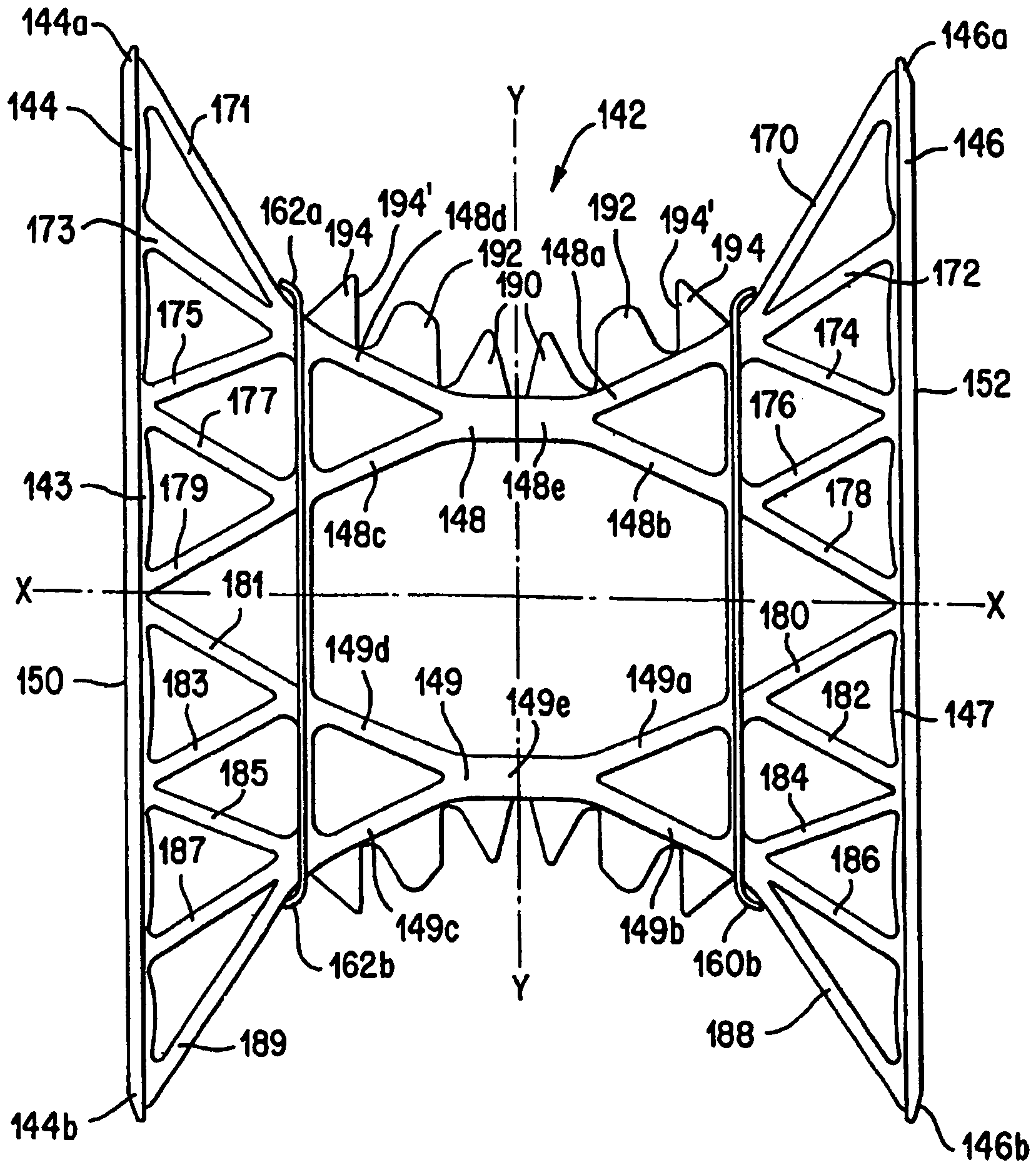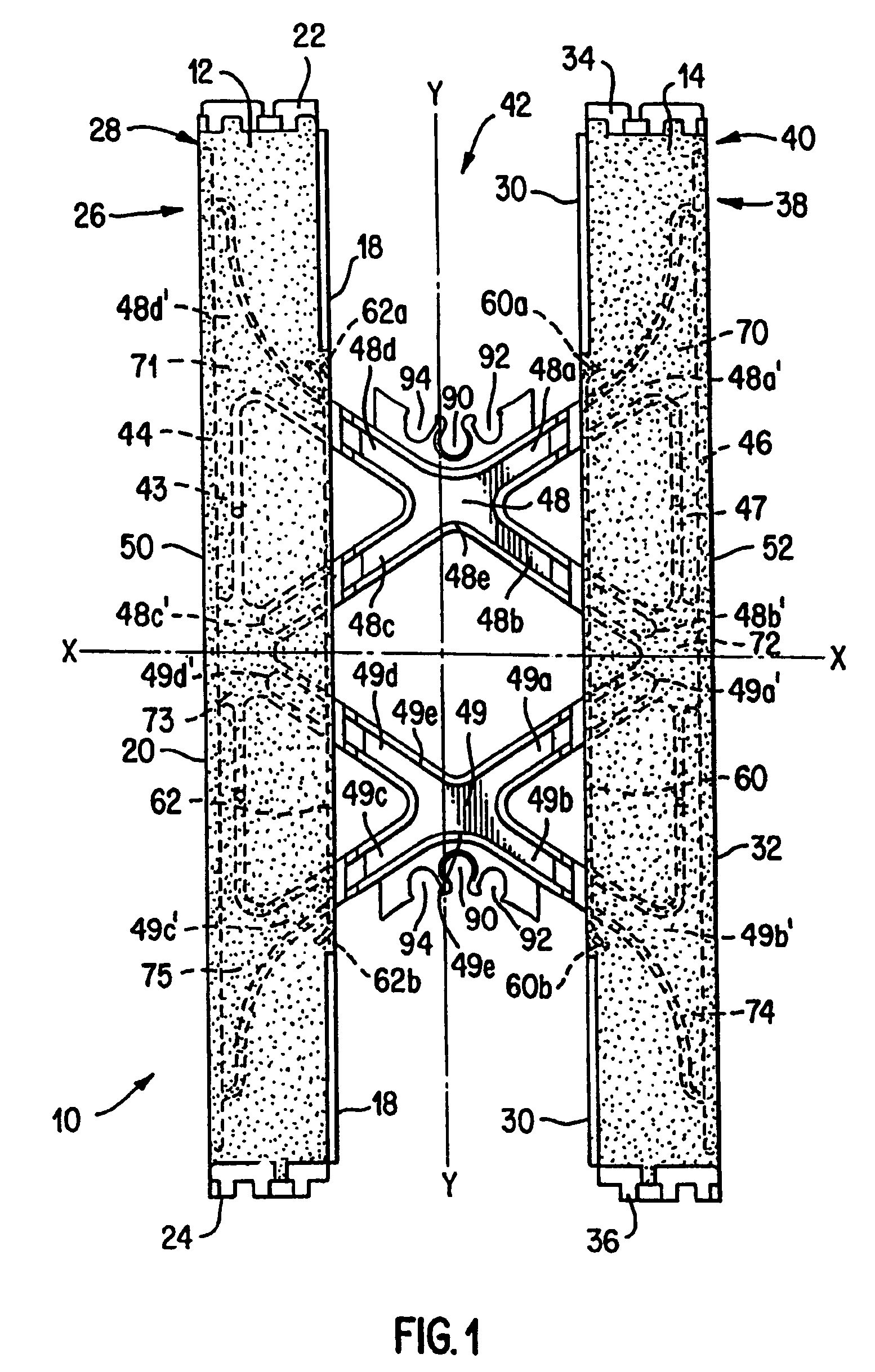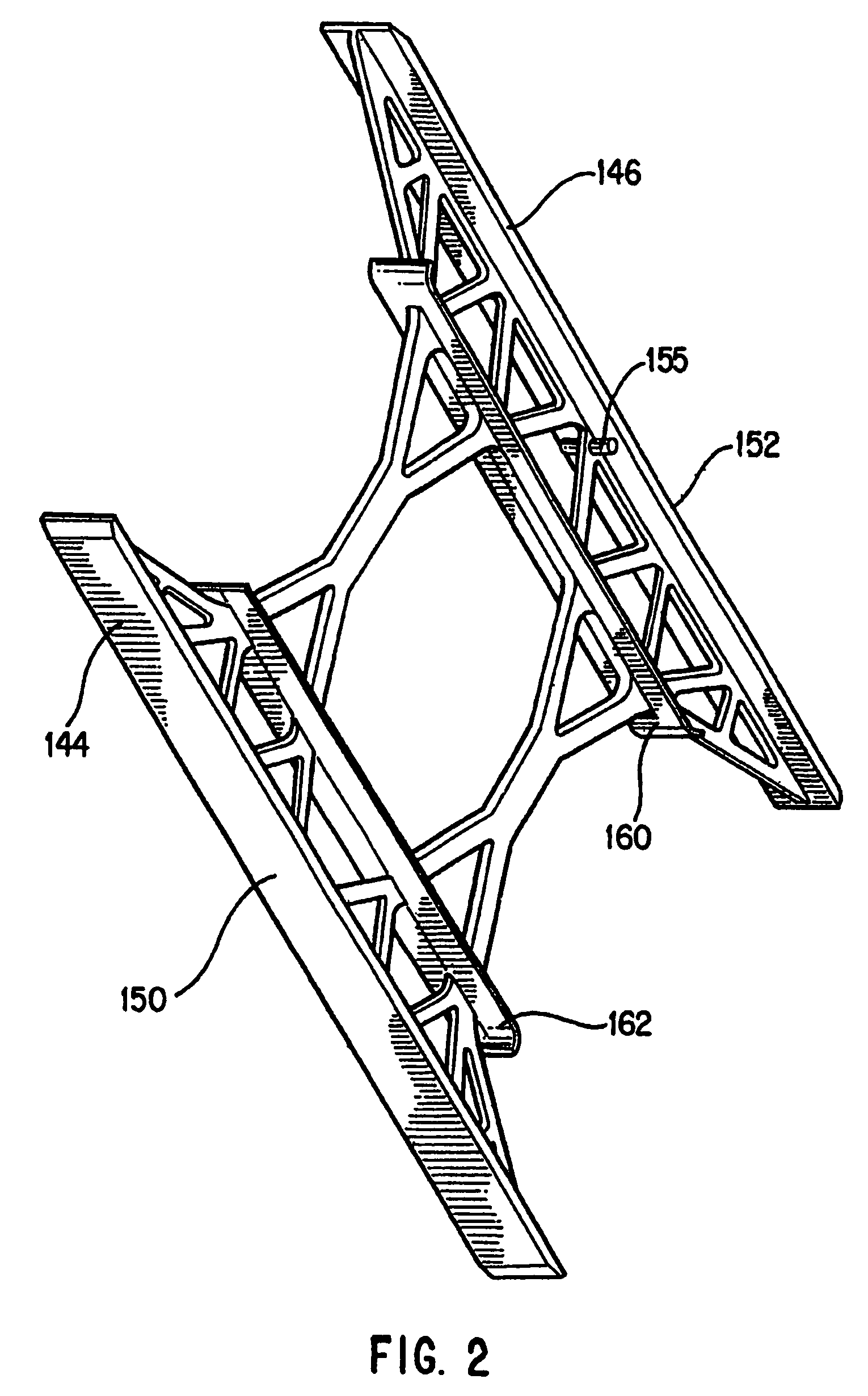Bridging member for concrete form walls
a technology of concrete form walls and bridging members, which is applied in the direction of walls, building components, pillars, etc., can solve the problems of labor-intensive and expensive, time-consuming and wasteful materials, and both parts of this construction are inefficient, so as to improve the strength and reinforcement grid, reduce material consumption, and optimize the effect of strength
- Summary
- Abstract
- Description
- Claims
- Application Information
AI Technical Summary
Benefits of technology
Problems solved by technology
Method used
Image
Examples
Embodiment Construction
[0029]Reference will now be made in detail to preferred embodiments of the invention, examples of which are illustrated in the accompanying drawings.
[0030]An ICF building component 10 shown in FIG. 1 comprises first and second insulating foam panels 12 and 14 secured together by at least two bridging members 42, which can generally be thought of as any structure used to connect the panels together consistent with the purposes and objectives of the invention.
[0031]Panel 12 has inner and outer surfaces 18 and 20 respectively, top and bottom 22 and 24 respectively, and first and second ends 26 and 28. Panel 14 has inner and outer surfaces 30 and 32, top and bottom 34 and 36, and first and second ends 38 and 40.
[0032]The panels 12 and 14 can be formed from fire retardant expanded polypropylene, polystyrene, polyethylene or other suitable polymers with expanded polystyrene commonly referred to as “EPS” being preferred. Subject to indentations and protrusions of minor dimensions, which ca...
PUM
 Login to View More
Login to View More Abstract
Description
Claims
Application Information
 Login to View More
Login to View More - R&D
- Intellectual Property
- Life Sciences
- Materials
- Tech Scout
- Unparalleled Data Quality
- Higher Quality Content
- 60% Fewer Hallucinations
Browse by: Latest US Patents, China's latest patents, Technical Efficacy Thesaurus, Application Domain, Technology Topic, Popular Technical Reports.
© 2025 PatSnap. All rights reserved.Legal|Privacy policy|Modern Slavery Act Transparency Statement|Sitemap|About US| Contact US: help@patsnap.com



